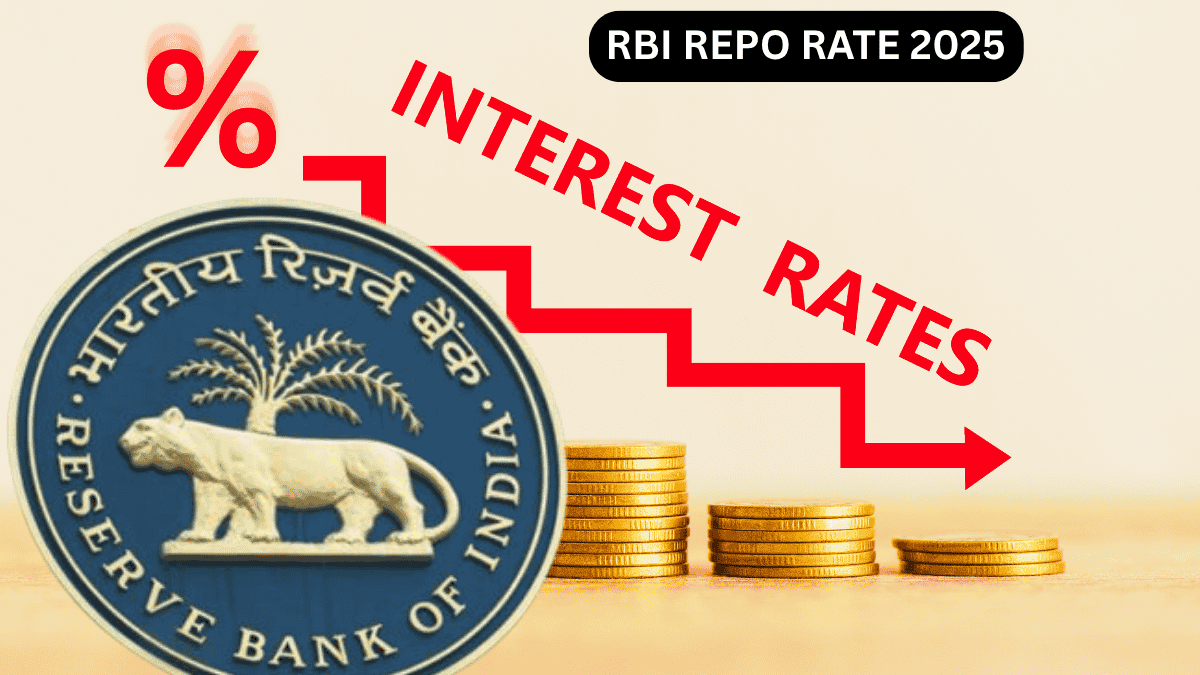Overview of RBI Repo Rate 2025 Decision
The Reserve Bank of India (RBI) announced on August 6, 2025, that it would keep the repo rate unchanged at 5.5%, continuing its neutral policy stance. The repo rate, a critical tool in monetary policy, determines the rate at which RBI lends to commercial banks and has a broad influence on loan and deposit rates throughout the Indian economy. Despite global uncertainties—especially the latest US tariff threats—the RBI opted for stability to ensure the domestic economy remains resilient.
Key Factors Influencing RBI Repo Rate 2025
- Global Trade Tensions: Ongoing tariff threats from the US, led by President Trump, have created uncertainty for Indian exporters, particularly in sectors like textiles, auto parts, chemicals, and diamonds.
- Domestic Economic Strength: Private consumption and government infrastructure investment remain robust, bolstering India’s growth outlook even as external demand faces risks.
- Inflation Trends: The RBI lowered its inflation forecast to 3.1% for FY26, signaling confidence in softening price pressures, which supports maintaining the current repo rate.
- Transmission of Past Cuts: After cutting the repo rate by 100 basis points since February 2025 (including a notable 50 bps cut in June), the RBI wants to allow time for these reductions to fully impact the economy before considering further moves.
Impact of US Tariff Threats on RBI Repo Rate 2025 and Indian Economy
- Tariff Threat: The US imposed a 25% tariff on key Indian exports, citing trade imbalances and India’s continued purchase of Russian oil.
- Economic Growth: Analysts predict these tariffs could reduce India’s GDP growth by 20–30 basis points for FY26 as export demand softens and exporters’ margins erode.
- Rupee Pressure: Reduced export earnings might lead to increased rupee volatility as dollar inflows weaken.
RBI Repo Rate 2025: Effect on Borrowers and Businesses
- Stable Lending Rates: Homebuyers, infrastructure projects, and real-estate developers are likely to benefit from stable borrowing costs, which encourages ongoing investment and spending, especially in smaller cities and during the festive season.
- Export-Oriented Businesses: Exporters in the affected sectors may face lower profits and job losses as US buyers turn to alternatives in Vietnam, Indonesia, and Japan.
- Manufacturing & Trade: Continued global headwinds may dampen prospects for manufacturing firms focused on exports, although domestic demand and investment remain supportive.
Future Outlook for RBI Repo Rate 2025 and Economic Growth
The RBI signaled its readiness to act should incoming data or global risks worsen, but remains cautious in the face of external shocks. The central bank is closely watching US-India trade negotiations and international commodity prices for further cues. With inflation under control and GDP growth still healthy at a projected 6.5% for 2025-26, the RBI’s current stance seeks to balance growth, stability, and resilience.
Summary Table: RBI Repo Rate 2025 Snapshot
| Aspect | Decision/Status (Aug 2025) | Details |
|---|---|---|
| Repo Rate | Unchanged | 5.5% (RBI repo rate 2025) |
| Monetary Stance | Neutral | Wait-and-watch strategy |
| CPI Inflation Forecast | Lowered | 3.1% for FY26 |
| GDP Growth Outlook | Retained | 6.5% for FY26 |
| US Tariff Impact | Significant on Exports | 25% on textiles, auto parts, diamonds, chemicals, etc. |
| Real Estate Sector | Stable, Affordable Borrowing | Positive impact for homebuyers & developers |
| Rupee Trend | Likely Volatile | In response to global trade and tariff developments |
In summary: The RBI repo rate 2025 decision highlights confidence in India’s domestic growth amid global uncertainties. Easing inflation and the transmission of earlier rate cuts give the RBI flexibility to maintain its current course. The next key watch-points are the evolution of the US-India tariff situation and any further external shocks—which could influence the RBI’s approach going forward. For now, borrowers and businesses can expect stability, while exporters will need to adapt to challenging global trade conditions.
Disclaimer:
The information provided in this blog is for general informational purposes only and should not be construed as financial or investment advice. While every effort has been made to ensure the accuracy and reliability of the data and analysis presented, markets and economic conditions are subject to rapid changes. Readers are encouraged to consult with qualified financial advisors or professionals before making any financial decisions. The Reserve Bank of India’s policies and global trade situations may evolve, and this content reflects the scenario as of August 2025.


1 thought on “RBI Repo Rate 2025: Why It Remains Unchanged Amid US Tariff Threats and What It Means for India’s Economy”